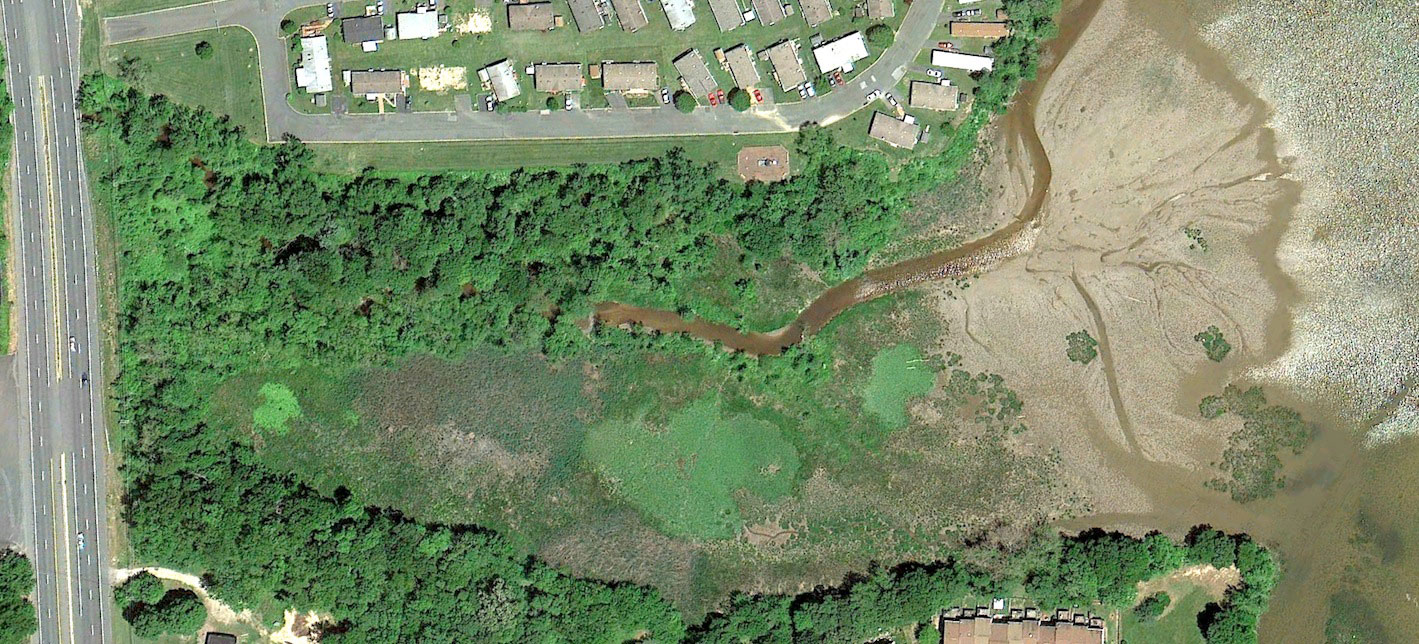Bush River, MD
Chesapeake Bay Context
The Chesapeake Bay system is the largest estuary in North America, having formed via the drowning of the lower Susquehanna River valley during Holocene sea level rise. Because it is subject to multiple fresh water and terrigenous sediment inputs from the rivers on its western shore and an equally influential semidiurnal salt water input from the Atlantic Ocean, Chesapeake Bay is a partially mixed estuary. Along the 200 mile major axis of the Bay there is a decline of salinity from 32 ppt at the junction with the Atlantic Ocean to less than 1 ppt salinity at the mouth of Bush River (Pritchard, 1971). Each tributary mimics this salinity gradient from their brackish junction with the bay up to the fresh stream feeding the head of tidal propagation. As a result the tributaries are considered to be “subestuaries”.
 Bush River, MD
Bush River, MD
Bush River, into which Otter Point Creek runs, is itself a tributary of ChesapeakeBay. Apparently Bush River has received little scientific scrutiny except to find that 18.1% of its volume is intertidal and the tidal range at its mouth is 0.36 m on average (Cronin, 1971). Presently, Jim bailey, a wetland biologist at Aberdeen Proving Ground, is leading an effort to study submerged aquatic vegetation in Bush River. The Anita C. Leight Estuary Center located at Otter Point Creek is also promoting research of Bush River.
References:
- Cronin, W.B., 1971, Volumetric, areal, and tidal statistics of the Chesapeake Bay Estuary and its tributaries: Special Report 20, Chesapeake Bay Institute.
- Pritchard, D.W., 1971, Chemical and physical oceanography of the Chesapeake Bay: in Schubel, J.R., The estuarine environment, estuaries and estuarine sedimentation: Am. Geol. Inst., Chapter IVA, 28p.


